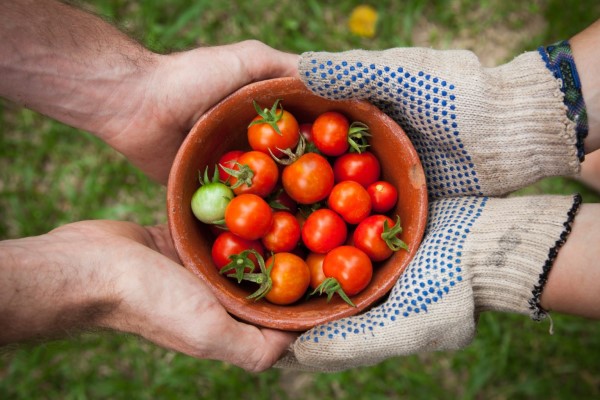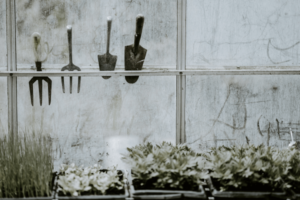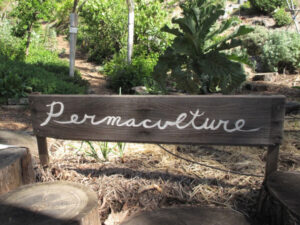How to start a community garden: Part 3

In the final instalment of how to start a community garden with Ethical.net, it’s time to address the key issues of planning and design, as well as how to make sure it’s sustainable in every way.
Planning and designing your community garden
To raise funds, you need a concrete idea of how much money is necessary. The next step is the fun part: working together to plan and design your community garden.
Consider:
- People (your community: who they are and what they want).
- Place (the limitations and characteristics of the site itself).
- Priorities (main objectives and how best to achieve them according to the first two categories).
The ethics and principles of permaculture may help provide a blueprint for garden design.
A detailed site survey will allow you to move beyond the basics of whether a site is suitable, and begin to determine the best plan for realising your intentions.
Sectors, patterns and the big picture
You should also build up a clear picture of the type, pH, and characteristics of the site’s soil. Note whether it is degraded or contaminated, and establish what must be done to improve or make it safe. For a list of companies offering soil testing, or for more information on soil in your area, the Soil Association is a good source of information. Will you have raised beds and containers, or largely grow in the ground?
Look at any vegetation already on site, and think about what must be done to clear it before you begin. The process of design should begin with observation; look at patterns and the big picture before progressing to designing details of the site.
Zoning and a garden site plan
Think about all the major elements to be included on site. For example, an annual vegetable garden, a forest garden zone, or perennial beds. Other main elements may include a composting area; water tap, water source, or rainwater harvesting; tool shed(s)/buildings; a seating area; a wildlife pond; wilderness zones; etc.
Permaculture zoning and an analysis of inputs, outputs, and characteristics for the various elements can help you develop the best positions for them in terms of usage, and how they will be joined by pathways.
If you and your group are not confident about designing the garden, many online resources can help you learn more about permaculture practices and methodology. And you could always seek the services of a permaculture designer.
By now, you should have a much better idea of what you need and want, and therefore also a clearer idea of how much money will be required.
Financial planning and budgeting
It will be crucial to manage money wisely. Clear rules about the handling of money are essential, and it is a good idea to set up a dedicated bank account for the group, to keep funds separate from those of individuals. Find out what financial skills are already present in the group, and seek out financial and budgeting help if required.
Make a spreadsheet of all costs, and begin to calculate a start-up budget, and to record ongoing yearly costs. In terms of financial planning, it will be useful to have:
- A project start-up budget.
- An income and expenditure budget.
- A cash-flow budget (a monthly breakdown of the above).
- A summing-up balance sheet at the end of the financial year.
Budgets are very useful for the group’s internal use, as well as, especially in the early stages, sending to funding bodies when applying for grants.
Costs for a community garden usually include:
- Land (either bought or rented) – though sometimes this can be gardened for free.
- Fencing – to keep out people and animals, and deter vandalism and casual damage.
- Tools (though often these can be sourced for free, or shared).
- On-site storage (for tools and supplies).
- Plants and seeds (again, these can often be sourced for free).
Raising funds and generating income
So, where is the money needed for the community garden going to come from? There are a number of different options to consider.
Firstly, you might generate your own funds, for example, by:
- Fundraising activities and events.
- Seeking donations in kind. (Individuals, authorities, and local businesses might all be enticed into helping supply goods, resources, or services.)
- Sales of goods and services. (For example, paid social events to get started; once up and running, excess produce could be sold – for example, through a farmers’ market. Cuttings, plants, or seeds might also be sold, as well as products made from garden yields. Educational or training workshops on site could give an additional income.)
Securing external funding is another possibility. Capital funding (for initial set-up of the site) is usually more forthcoming than funding for running costs. Sources for funding might include:
- Charitable trusts.
- Lottery funding.
- Public funds (government departments, local authorities, groundwork trusts, etc).
- Local businesses, or local branches of natural or international companies.
- Crowdfunding and online fundraising services.
Reducing the money required
Raising funds for a community garden can sometimes take time and effort – but it is possible. It is key to remember, however, that you might need less money than you imagine.
To reduce the amount required, think about:
- Reducing, reusing, repairing, recycling, and reviewing regularly.
- Borrowing or sharing to reduce the need to buy new products.
- Bartering for goods and services, joining Local Exchange Trading Schemes or co-ops.
- Joining local Time Banks.
- Joining forces with other groups to get better prices on goods or services.
Safety issues and site insurance
Once a site is secured, with funding in place, you will doubtless want to get started right away, but a few matters should be attended to before getting cracking on site. It is very important for all community groups to have the right insurance in place. You will likely need:
- Public liability insurance.
- Professional indemnity insurance / Employers’ liability insurance.
It may also be worth having:
- An all-risks insurance policy (to cover the site against fire, theft, vandalism, etc).
- Other specific insurance, such as for vehicles, if one will be used to carry materials or people for community garden work, or a group personal accident policy for all staff and volunteers.
At the very least, public liability insurance will usually have to be in place before any work begins.
Community groups have a responsibility to ensure the safety and security of their volunteers, staff, and visitors. After carrying out an initial risk assessment, ensure that regular risk assessments are carried out each year.
There can be a number of dangers in a community garden, including:
- Poisonous plants and fungi.
- Obstacles and trip hazards.
- Overloaded wheelbarrows, bending, and heavy lifting causing back problems.
- Dangerous garden tools. (Good practice around putting tools away, and training in their use, go a long way toward reducing accidents.)
- Vermin posing health risks. (These can be attracted, for example, by poorly maintained and managed composting.)
- Pathogens spread, for example, by the use of manure.
- Fire hazards.
- Bees (if these are kept on the site).
Preparing and/or cooking food on site has its own potential dangers, requiring adherence to food safety legislation.
Volunteers and training
Taking on volunteers, and perhaps even employing staff, is an important step. People are a community garden’s most valuable resource, so whether paid or unpaid they need to feel valued, supported, and well managed. Be active in engaging volunteers, but make sure you understand how to manage them, and have met all legal obligations toward them. View training for volunteers as an investment rather than a cost, and remember that training can take many forms.
You may welcome volunteers as and when, but a more formal recruitment structure is preferable for long-term sustainability, including, interviewing and training. This will help avoid some common pitfalls, ensuring that those who form a central core of volunteers (or potentially, later in the process, paid staff) will be retained after the initial ‘honeymoon phase’ of the project.
Keeping up the enthusiasm
After the initial creation phase, when the garden is new and exciting, it may be difficult to maintain volunteers’ or the wider community’s enthusiasm. Be sure to:
- Continue to keep everyone regularly informed – through a newsletter or website, for example.
- Keep drumming up interest and raising your profile in the local area.
- Make sure that you have plenty of interesting things going on, such as workshops and events. The garden shouldn’t only be about the more humdrum gardening work such as weeding.
- Keep things going during the winter months with indoors events, infrastructure maintenance, etc.
- Provide plenty of variety in tasks, crops, and harvests. Keep trying new things.
Keep checking in, reviewing, and evaluating to make sure your community organisation is still working and fit for purpose, and cast your eye back over your initial ideas, action plan, and constitution to make sure your community garden is doing what it was intended to. Track your progress and results by measuring yield, volunteer hours, sales totals, or a range of other metrics.
There are plenty of other things to consider, and plenty of online resources to help you. But once these basics are in place, you can go on to enjoy your community garden – turning your chosen site into the beautiful and productive place you knew it could be, and managing it sustainably.
Catch up on Part 1 here and Part 2 here. Find the original post by Elizabeth Waddington on the Ethical.net blog. Main image by Elaine Casap on Unsplash.
 About the author
About the author
Ethical.net is a collaborative platform for discovering and sharing ethical alternatives, whether purchasing from a social enterprise, thrift shopping, or learning how to fix your old phone instead of buying a new one. They aim to make ethical the new normal.
The views expressed in our blog are those of the author and not necessarily lowimpact.org's




 How to start a community garden: Part 1
How to start a community garden: Part 1
 How to start a community garden: Part 2
How to start a community garden: Part 2
 Keeping communities growing: how to get involved
Keeping communities growing: how to get involved
 Community
Community
 Forest gardening
Forest gardening
 Fruit trees & orchards
Fruit trees & orchards
 Permaculture
Permaculture
 Vegetable growing
Vegetable growing
 Wildlife gardening
Wildlife gardening


